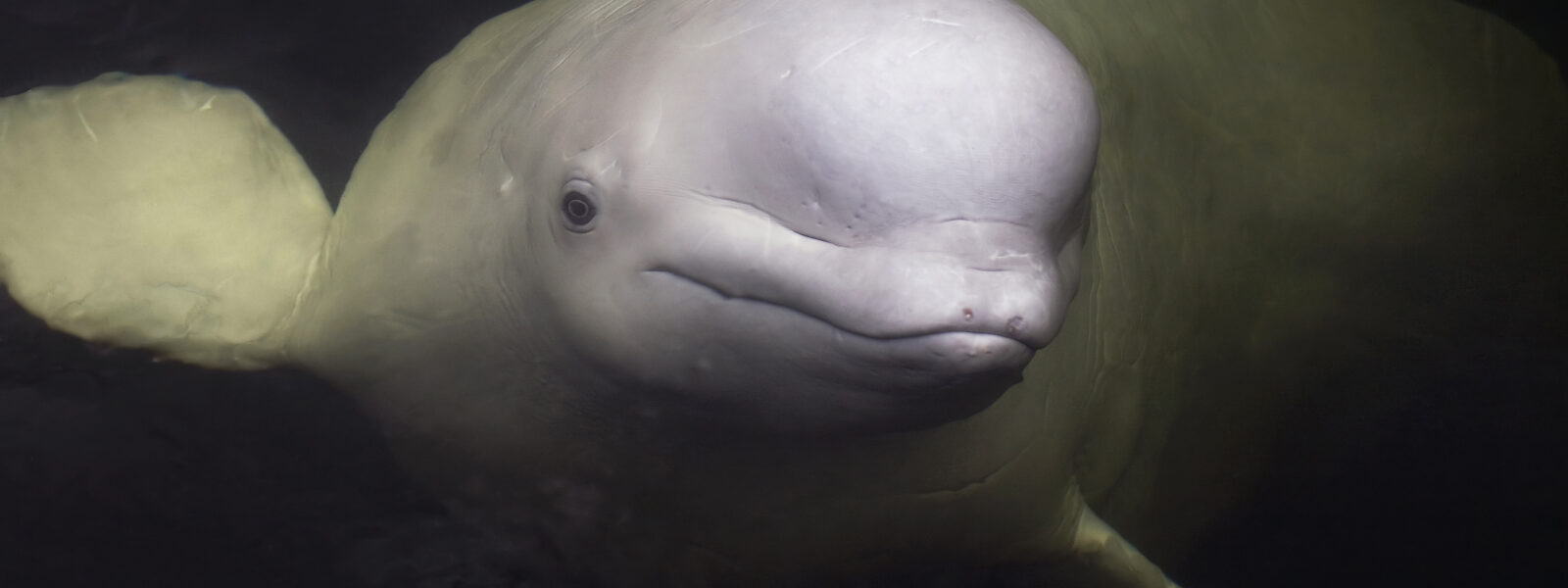
Beluga Whale Dies at Mystic Aquarium, 3 Months After Dreaded Transfer
By Mark Palmer
Last May, the Mystic Aquarium controversially imported five captive beluga whales from the Marineland aquarium in Canada. The International Marine Mammal Project (IMMP) of Earth Island Institute and other organizations expressed concerns about the stress on these whales from the move and from integrating into a new aquarium setting at Mystic. Now, one of those five beluga whales has died.
In a recent full-page advertisement and subsequent news stories, Mystic Aquarium referred to its import of the five beluga whales from Canada as a “rescue”. They even described this import of captives as a necessary source of scientific research to benefit and even prevent the extinction of wild beluga whales. Mystic also stated that not allowing the belugas to breed in captivity, a condition of their permit, is harmful.
None of these claims are true, and the import was contested strongly by conservation and animal welfare organizations concerned about captive cetaceans, their capture from the wild, and international trade.
There was no compelling need to remove the captive beluga whales from their Canadian aquarium in Niagara Falls and bring them to Mystic Aquarium, and clearly the scientific permit allowing the import was not a “rescue.” The research studies proposed by Mystic Aquarium could have been conducted in Canada, sparing the five belugas the stresses of travel that took 22 hours and their release into a new, unfamiliar tank with unfamiliar tank mates. As we feared, one of the imported whales has died.
Most of the scientific studies proposed by Mystic Aquarium are unlikely to yield much useful conservation information for free-ranging beluga whales, because the aquarium environment is so different from the ocean. In captivity, cetaceans cannot choose their tank mates, nor do they hunt live prey, swim long distances in a straight line, or dive to deep depths. They are severely constrained and must follow routines set by their trainers. This is in no way how whales and dolphins live in the ocean.
IMMP and other organizations strongly supported the US National Marine Fisheries Service’s restriction on the import permit that these five belugas not be used for breeding at Mystic Aquarium.
Breeding beluga whales and other cetaceans in captivity has but two purposes: To lure the public into the aquarium and to breed additional captive whales and dolphins, ultimately increasing profits. There is a consensus among biologists that cetaceans born in captivity are unlikely to survive if released into the wild, at least with the current level of knowledge available on rehabilitation protocols. We simply do not (yet) know how to provide them with the skills needed to find and handle live prey or to integrate with free-ranging populations.
According to an article in The Middletown Press, Mystic Aquarium “called the prohibition on breeding ‘harmful and cruel,’ and stressed the importance of breeding these animals.”
This is the worst kind of anti-science misinformation. Aquariums routinely control breeding of cetaceans in captivity, including administering drugs, developed for livestock, either to speed up the reproductive rate, in order to produce more offspring for exhibition, or as contraception. Aquariums often separate just-weaned, but still socially dependent, calves from their mothers to encourage the mother to produce more offspring faster. They also routinely prevent breeding between closely related individuals. Any facility that cannot control reproduction as a matter of standard husbandry risks inbreeding and/or over-population within the limited, confined space of captivity.
And of course, as noted above, captivity deprives cetaceans of any number of natural behaviors, meaning Mystic Aquarium is cherry-picking which behaviors are “harmful and cruel” to limit and which are not. We feel it is no coincidence that the one behavior the aquarium focuses on is the one that produces more animals for public display.
It is no wonder that beluga whales, like orcas and other captive cetaceans, live shortened lives in captivity due to physiological stress and suppressed immune systems, resulting in chronic infections and diseases. Cetaceans are often plied with antibiotics, antacids, antidepressants, and antipsychotics in captivity to counteract the chronic ill effects of captivity.
Mystic Aquarium signed off on the import permit that the beluga whales were in good health. Now that one has died, Mystic is blaming the death on a “preexisting condition” at Marineland. The Mystic staff have some hard explaining to do.
The ban on breeding of these beluga whales in its scientific research permit needs to be honored by Mystic Aquarium – not just in deed but in words. When Mystic Aquarium sneers at and criticizes the ban in its media campaigns, it undermines the ban’s conservation purpose, which is to discourage international trade in depleted beluga populations.
The International Marine Mammal Project of Earth Island Institute, along with other organizations, will carefully follow the welfare of these imported belugas and work for the day when whales and dolphins are no longer kept in tiny concrete tanks to the detriment of their welfare.
Thanks to your donations, the five (now four) beluga whales in captivity at Mystic Aquarium cannot be bred to produce more captive beluga whales, consigned to a life of misery in small concrete tanks. We appreciate your concern, and hope you will take this opportunity to renew your support for the International Marine Mammal Project. Thank you for your generosity!
